Kells Landing
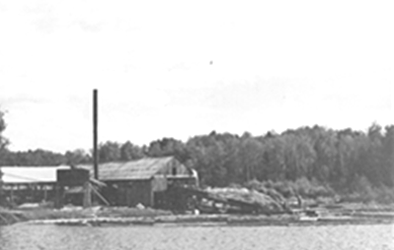 |
|
The mill building at the edge of Kells Bay, Rebecca Lake (Gay Swan)
|
Edward and Anne Eliza Kells acquired Lot 3, Concession 5, at the southern tip of Rebecca Lake, from the original Crown patent holder, William Nelson, in 1898 for $300. The Kells never built on the property, but the access point for travel across the lakes became known as “Kells Landing.” Limberlost Lodge often brought guests there to transport them by boat to the sand beach.
Hugh Hill and Edgar Brook
In 1938 Hugh Taylor Hill of Friendly Acres at Hillside, a grandson of the Rev. Robert Norton Hill and cousin of Gordon Hill of Limberlost, leased the property. He moved his sawmill from Limberlost to Kells Landing and operated it there for a number of years. Later Hugh partnered with Edgar Brook (“Brookie”), a lumberman who had worked at Camp Billie Bear since 1927. Brookie married the owner of Bille Bear, Mabel Hart, his second wife, who was born in the area. Brookie eventually took over the running of the sawmill, purchasing Hugh Hill’s share. It became known as “Brook’s Mill.” When Mabel sold Camp Billie Bear in 1945, she retired to live at Brook’s Mill, and in May 1951 she purchased the property from the Kells.
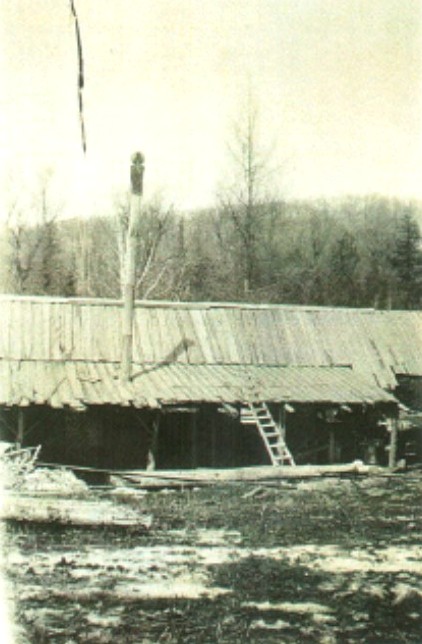 |
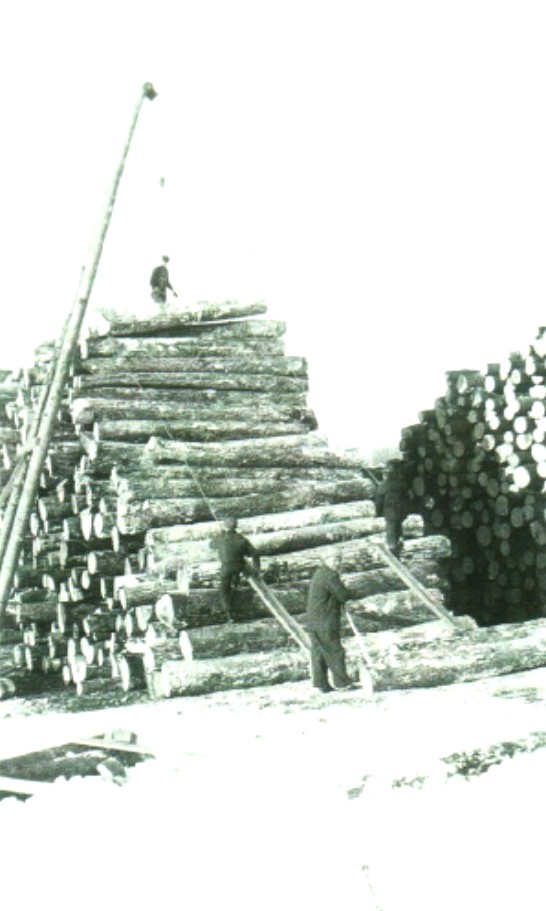 |
|
|
Brook’s Mill (Gay Swan) |
“Skidway” – logs at Brook’s Mill (Gay Swan) |
|
Hugh Hill, with his wife Florence, went on to spend more time running the tourist lodge Friendly Acres, where the annual “Pancake Social” was held each summer for the surrounding community, including cottagers from Bella and Rebecca Lakes. This event, originally called the “Pancake Frolic,” was first held at Brook’s Mill and carried on for many decades. Mabel got the idea for the “Frolic” during a trip to Delaware in 1948. It was a charitable event, and proceeds went to Hillside W.A., which later changed its name to Hillside U.C.W. (United Church Women)
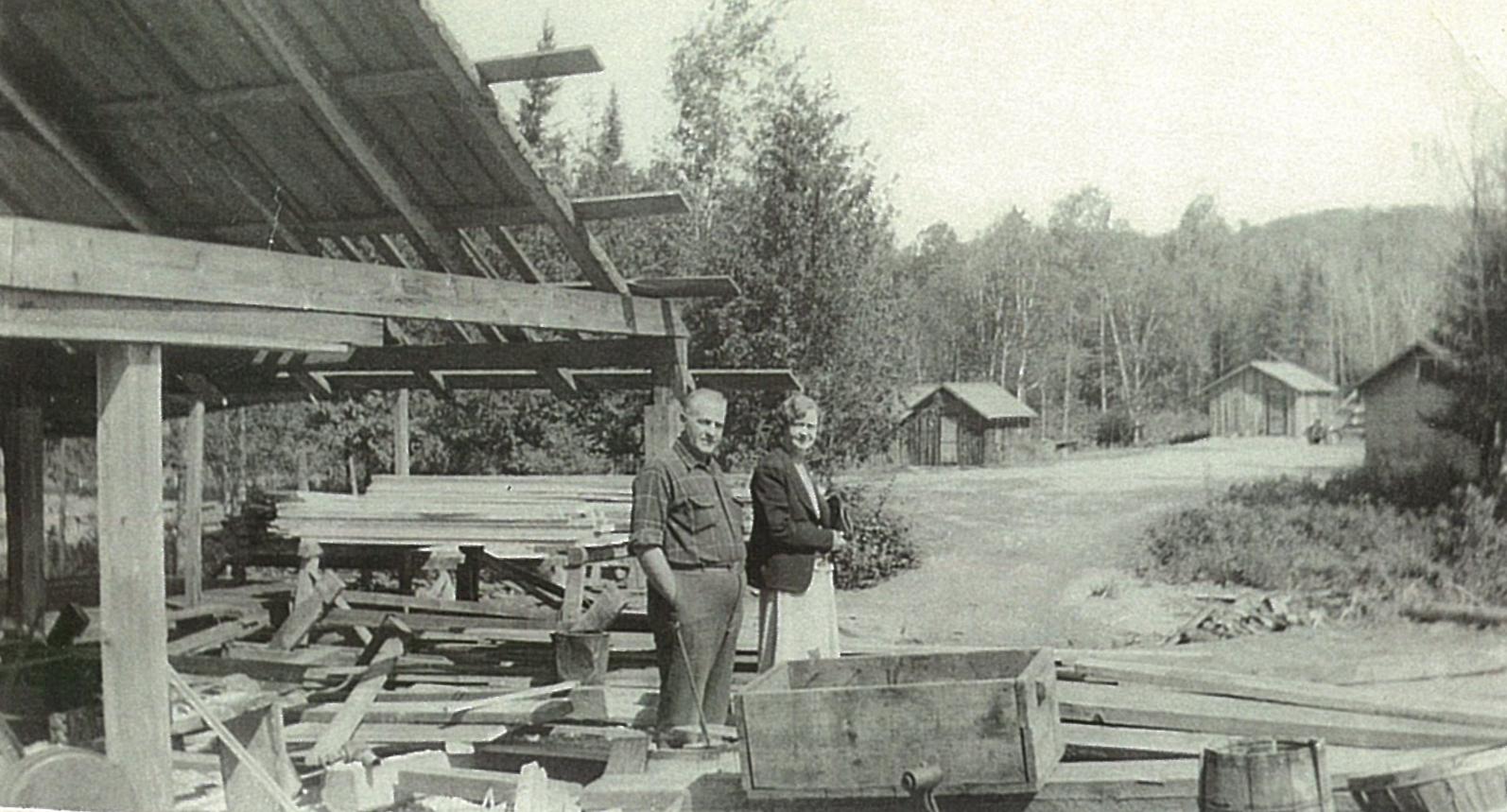 |
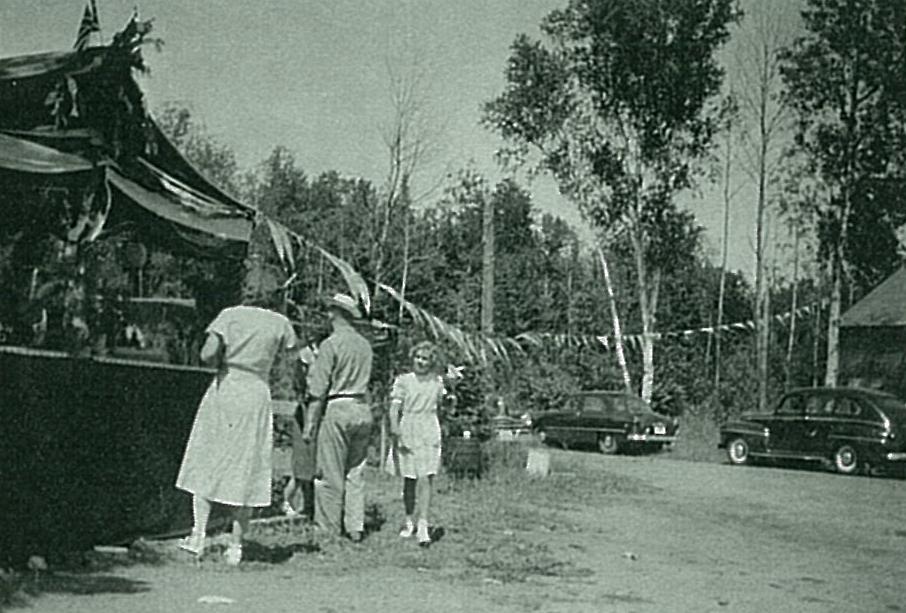 |
|
| Hugh Hill at the mill, c. 1930s (Gay Swan) | Snapshot of the Pancake Frolic held at Brook’s Mill, July 1949 (Gay Swan) |
From 1938 to 1952, Brook’s Mill was a major employer in the area, and a community developed around the mill. The site included a bunkhouse, camp kitchen, ice house, lumber mill, and blacksmith shop. George and Mrs. Sluman of Dwight looked after the meals, which were delicious. Breakfasts were hearty and even included pies! Originally the mill was steam-powered, until electricity came to the area in 1951. Les and Helen Martin, Lloyd and Zena Hill, Fred (Hugh’s cousin) and Millie Hill, Cecil and Olive Corcoran, Gordon and Bea Smith (Bea’s sister was Brookie’s first wife), Earl Strong, and Roy Montgomery were some of those who formed part of this small community. Many had also worked for Mabel and Brookie at Camp Billie Bear.
 |
||
| Home of Mabel and Edgar Brook, formerly the cook house, Brook’s Mill, 1952 (J. David Burgess) |
Hugh Hill lumbered the north shore of Bella Lake and had previous operations on the Limberlost Lodge property in 1937. Brookie and his brother Fred Brook had three logging camps on his properties west and north of Bella Lake: on Lot 9, Concession 9; further north towards the Big East River up “Brookie’s Tote Road”; and on the north side of the Big East. The men used horses to log in the bush. Logging was done in the winter, and logs were floated in the lakes in log booms to the mill in the spring. Kells Bay still harbours many sunken logs, and the mill’s legacy of bark and sawdust has given a rusty colour to the water.
The mill burned down in 1952. Brookie rebuilt an electric mill and carried on for a time before closing down the operation. Mabel registered a Plan of Subdivision (M-166) containing six lots in 1952; among those who built on these lots were Vic and Kay Gostlin, Cecil and Olive Corcoran, and Bea and Gordon Smith.
“Brookie Built”
Cecil Corcoran and Gordon Smith worked for Brookie building cottages and logging in the winter. Cecil’s wooden leg apparently did not prevent him from working on windows, doors, and even roofing.
Brookie-built cottages have a distinctive log look and had a reputation for not being quite level and being built with very long nails. Upon completing Miss Leslie Cruickshank’s cottage (a Robert Field lot on Rebecca), Brookie received a visit from her to say that her refrigerator would not fit, and the cottage was two feet short! Miss Cruickshank was a strong, outdoorsy woman and was quite adept with a chainsaw. It must have been an interesting meeting, as Brookie simply explained that he ran into bedrock, and that was that.
Brookie held many important roles in the community, including road building and maintenance, ploughing from the mill out to Highway 60 and back, dragging his disc harrows behind. Up until December 31, 1971, the local roads board was also responsible for collecting property taxes. Brookie was chairman of the board, and May Brook (whom he married after Mabel’s death) was the secretary-treasurer. A property owner had a choice: pay the tax, or complete statutory labour on roads. Brookie also built Fieldale Road, the first Fieldale Bridge, the third generation of the Mansell Road, Billie Bear Road to the lodge, the road to Fred Brook’s hunt camp (Big East), and the first Old Sinclair Bridge, which crosses the Big East. His bulldozer “Bertha” used cables, which resulted in large ruts in the road.
A Stop for Cottagers
Into the 1960s, Mabel and Brookie’s place was frequently visited by cottagers, to pick up their mail from the little log house that served as the community mailbox. Brookie had assumed yet another role in the community as postmaster. It was also a great opportunity to chat with Brookie and Mabel and get caught up on the local news and events. There was also a gas pump, with the glass tank on top, very handy for getting boat gas. When the glass top was full, your gas was released! Bookie and Mabel were also very involved in the early stages of the Mabel Hart Brook and Marion Hill Memorial Foundation.
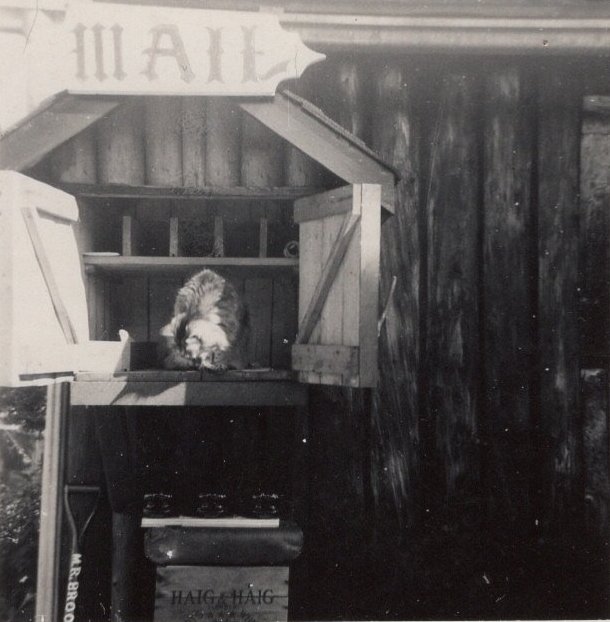 |
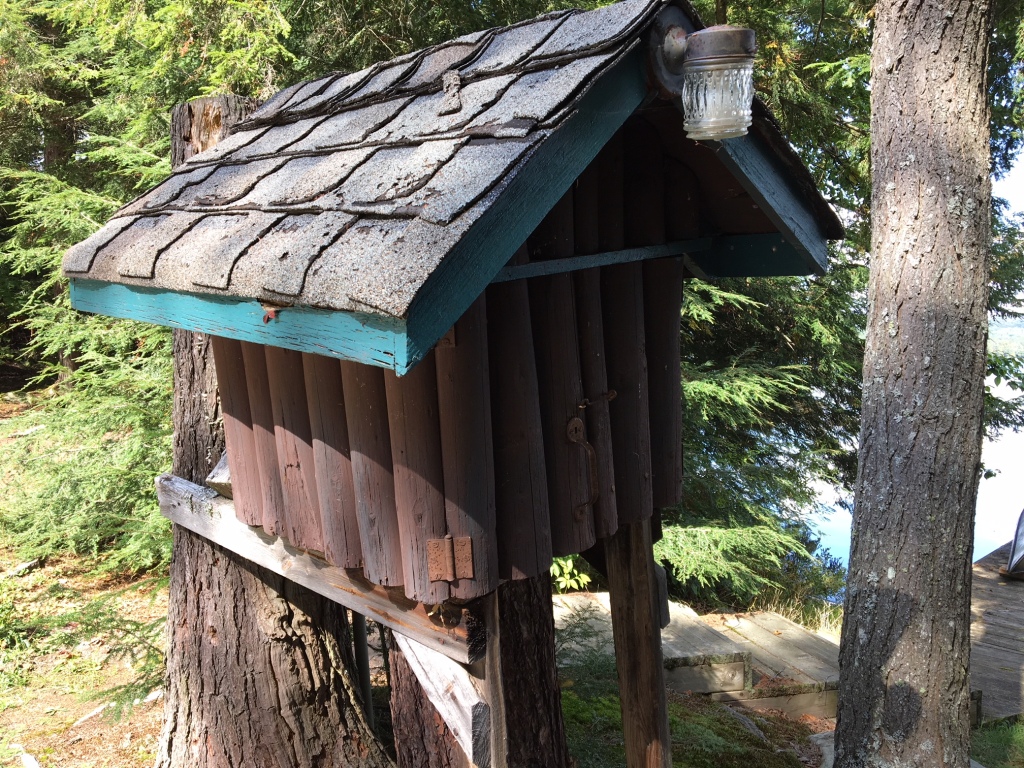 |
|
| Mailbox at Brook’s Mill, c. 1950s (Billie Bear Archive, Photograph Collection) | Brookie gave the old mailbox to the Burgess family, who placed it at Buck Island Point (Wendy Kimmel) |
Mabel died in 1963. The following year, Brookie married May Wilson, who died in 1977. Brookie died March 8, 1978 at 81 years of age. The Brook’s Mill cottage was next owned by Gertrude (Trudy) Hay, who made several changes and upgrades, including the exterior look of today, and also moved it closer to the lake. Trudy sold to Gay (grand-daughter of Hugh Hill) and Robert Swan, who in turn eventually sold the property.
Sources:
Burgess, David, “Fieldale Road” (Presentation at the Lake of Bays Library, Dwight, October 2013) and associated research and personal interviews (including Gay Swan).
“Cottage Histories by Road” (Binder of interviews and survey forms collected by Barbara Paterson), Barbara Paterson Collection.






